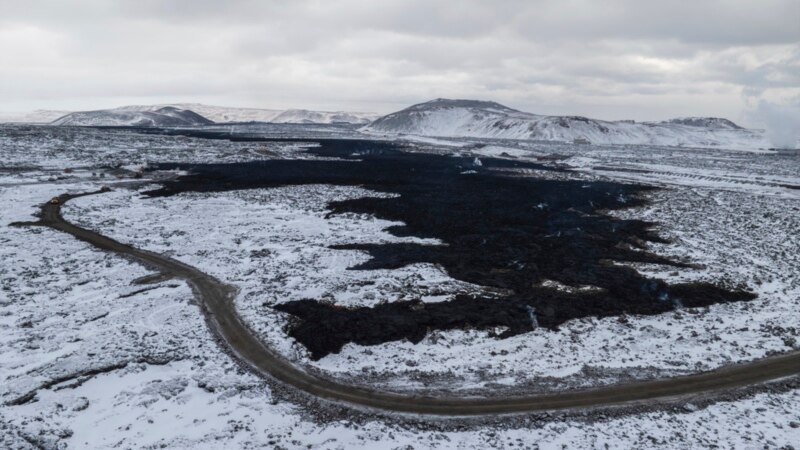Iceland’s Meteorological Office, or IMO, reported Friday that no eruption activity was observed and no volcanic tremor activity was detected by seismic sensors on Iceland’s southwestern Reykjanes Peninsula, suggesting the volcanic eruption that began there Thursday has ended.
In a statement on its website, the IMO said a special unit of the national police commissioner flew a drone over the eruption site Friday to look for signs of activity and observed none.
The office warned, however, there are still hazards related to gas pollution released by the eruption. It also warned there is danger that lava lobes can still burst out from the lava flow that remains in place. In addition, the office warned hazards from sinkholes and fault movements on the peninsula remain high.
Iceland’s Department of Civil Protection and Emergency Management on Thursday declared a state of emergency after lava flowed over a pipe transporting hot water to the Reykjanes Peninsula, causing the pipe to burst. The lack of hot water prompted schools, museums and other public institutions in the region to close Friday.
In a statement Friday, the agency said it expected the pipe to be repaired and hot water to be flowing by midnight Iceland time.
The eruption began early Thursday, spewing lava 80 meters into the air from a 3-kilometer crack that had opened in the earth. It was the third time the volcano has erupted since December. The fishing village of Grindavik, the closest populated area to the eruption site, has been evacuated since the initial eruption.
The IMO estimates about 15 million cubic meters of molten rock flowed from the ground in the first seven hours after Thursday’s eruption.
One of Iceland’s major tourist attractions, the Blue Lagoon luxury geothermal spa, was closed to the public after lava covered its main access road. A witness told the Reuters news agency that the giant outdoor pool itself was unscathed.
Some information for this report came from The Associated Press, Reuters and Agence France-Presse.

